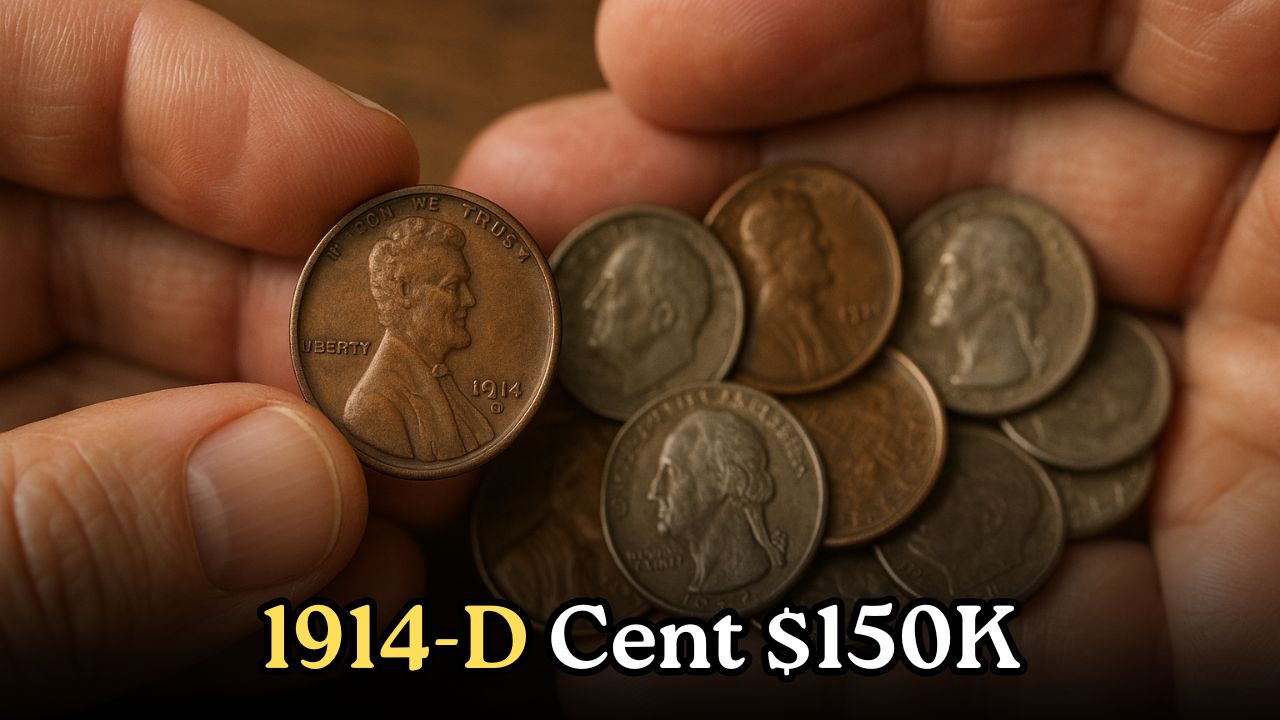1914-D Lincoln Penny – The 1914-D Lincoln Penny has become one of the most talked-about treasures in the coin collecting world. While many pennies pass through our hands daily without a second thought, certain rare ones can fetch life-changing sums at auctions. One such example is the 1914-D Lincoln Wheat Penny, which recently sold for more than $150,000. What makes this coin so valuable is not just its age, but its scarcity and the condition in which it has survived over a century. Minted in Denver, only a limited number of these pennies were produced, and even fewer remain in top-grade condition. Collectors are willing to pay staggering prices for coins like this because they represent both history and rarity. It serves as a reminder to always check your change closely—you never know when a small copper coin could turn into a massive fortune. The story of the 1914-D penny has inspired thousands to search through old jars, drawers, and wallets, hoping to uncover hidden treasures.
Why the 1914-D Penny is So Rare
The rarity of the 1914-D Lincoln Penny is tied directly to its limited mintage and survival rate. While millions of pennies were produced in other years, only about 1.2 million were struck in Denver in 1914. Over time, many were lost, damaged, or circulated to the point where their details became nearly unreadable. This left only a small number of well-preserved examples, which are now extremely sought after. Collectors place great value on coins that maintain sharp details, original luster, and minimal wear, making pristine 1914-D pennies particularly valuable. Their scarcity is compounded by the fact that counterfeit versions are common, forcing experts to carefully authenticate each one. For true collectors, owning an authentic 1914-D penny in top condition is like possessing a rare piece of history that connects directly to early 20th-century America.
How a Penny Reaches a Six-Figure Price
Many people wonder how a single penny can be worth more than a luxury car or even a small house. The answer lies in the world of numismatics, where demand, rarity, and condition determine value. For the 1914-D Lincoln Penny, its low mintage and limited surviving examples push its worth upward. When a coin is found in mint state, with virtually no signs of circulation, it can fetch astronomical prices at auctions. In this case, a top-quality 1914-D penny drew fierce bidding from collectors, eventually crossing the $150,000 mark. Coins like this are often graded by professional services, and higher grades can dramatically boost the value. This shows how the tiniest details—a clear date, strong lettering, or bright color—can turn a coin from a few dollars to a fortune.
Collectors’ Hunt for Hidden Wealth
Stories of rare coins being discovered in everyday change continue to excite treasure hunters. While the odds of finding a 1914-D penny in circulation today are slim, countless people still search old collections, coin rolls, and family keepsakes in hopes of striking gold—or rather copper. The thrill of the hunt drives the popularity of coin collecting, and tales of six-figure penny sales keep the passion alive. Even if you don’t stumble upon a rare 1914-D, there are many other valuable coins out there waiting to be found. Checking for unique mint marks, rare dates, or unusual errors could reward you with a surprisingly high-value discovery. In the end, coin collecting is about more than just money; it’s about uncovering history, preserving artifacts, and enjoying the excitement of a hidden treasure hunt.
What This Means for Everyday Coin Collectors
The success story of the 1914-D penny serves as both inspiration and motivation for collectors of all levels. Beginners are often drawn to coin collecting after hearing such stories, realizing that valuable finds could be lurking in plain sight. For more experienced collectors, it emphasizes the importance of knowledge, patience, and preservation. Understanding mint marks, grading systems, and authentication processes is key to identifying treasures among ordinary-looking coins. This example also shows how investments in rare coins can grow significantly over time, making them not only fascinating collectibles but also potential financial assets. Whether you’re casually checking your change or building a serious collection, the tale of the 1914-D Lincoln Penny proves that a small coin can sometimes carry a very big surprise—and possibly a life-changing fortune.
